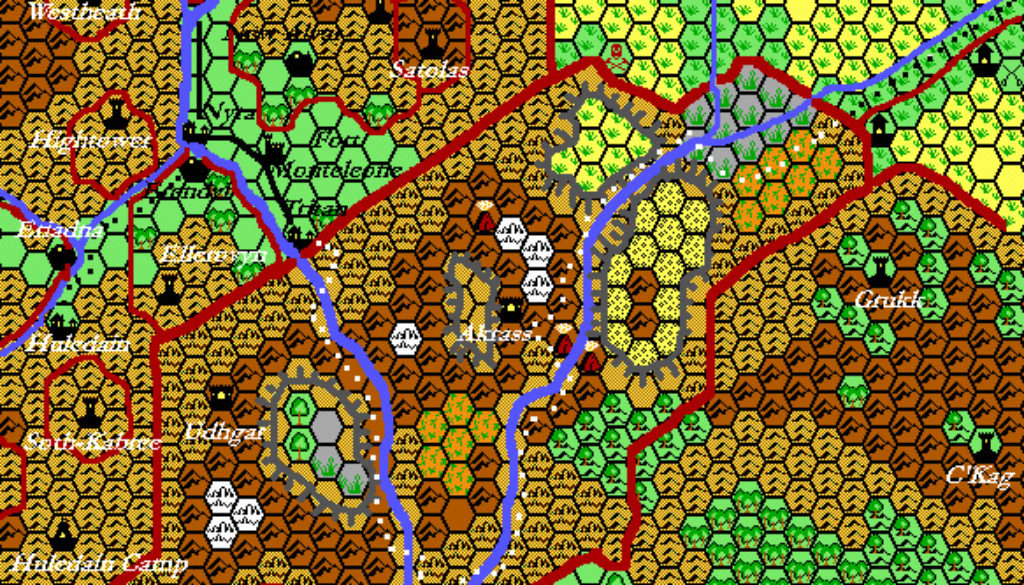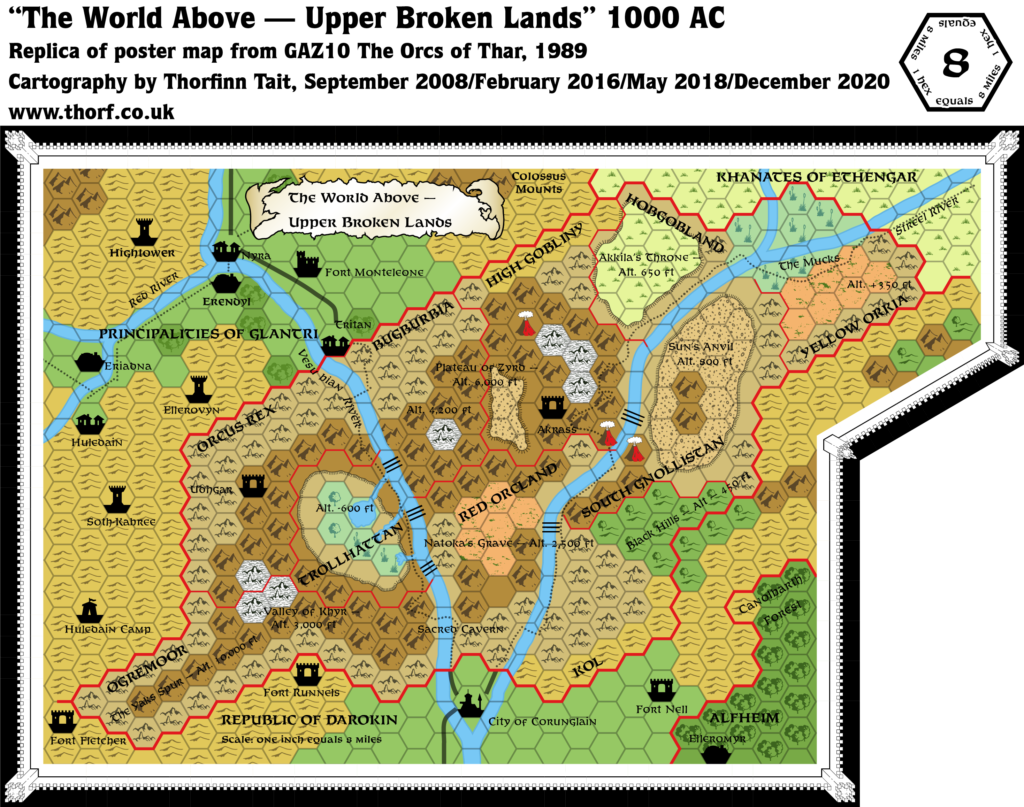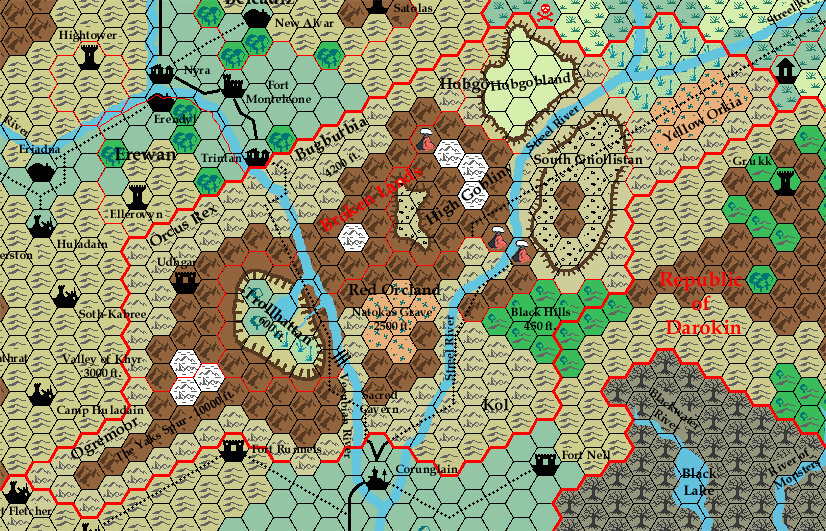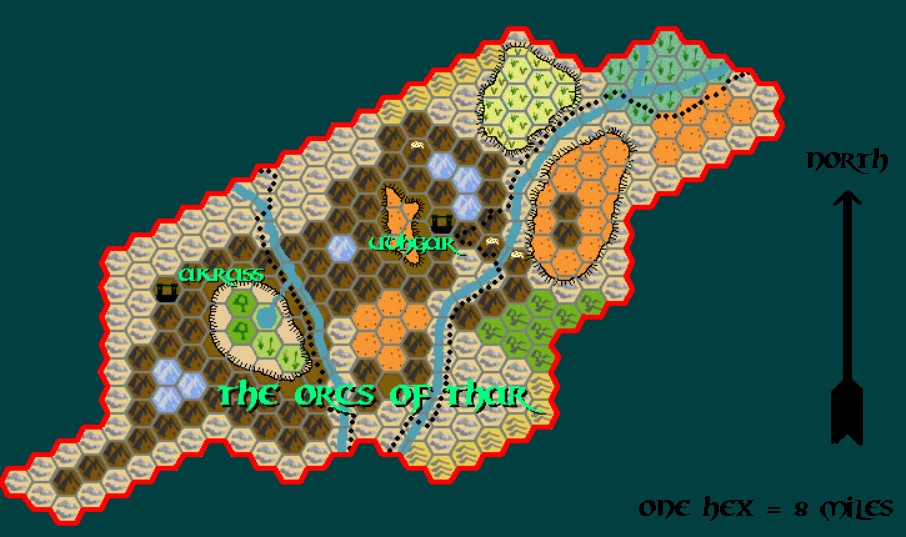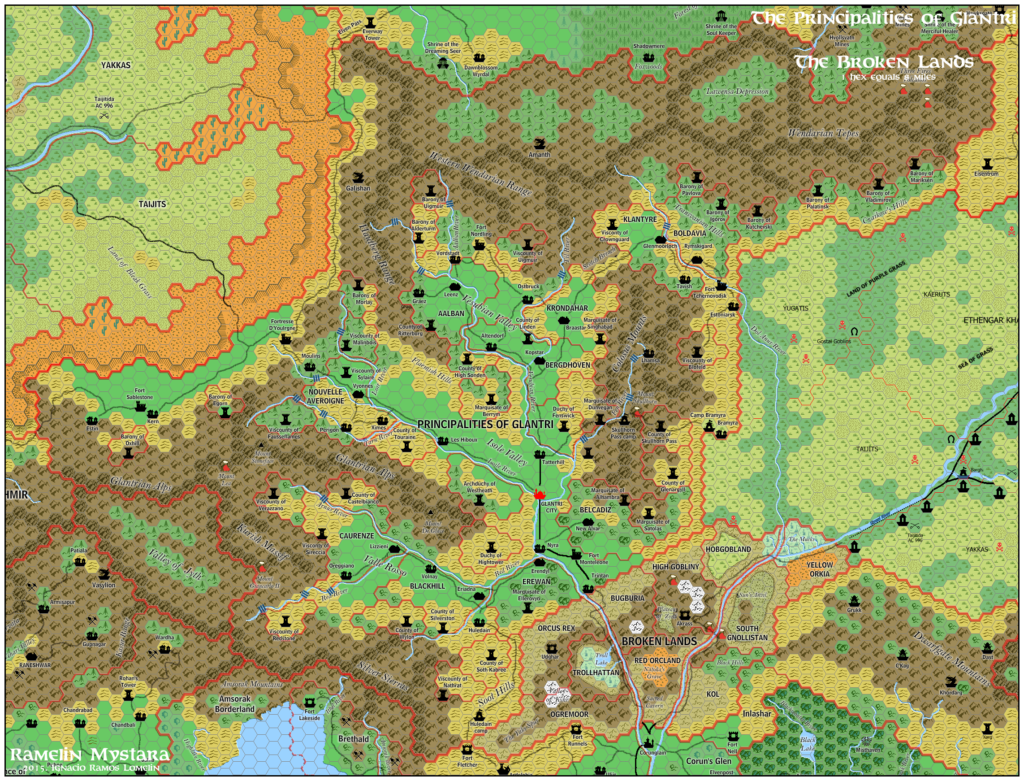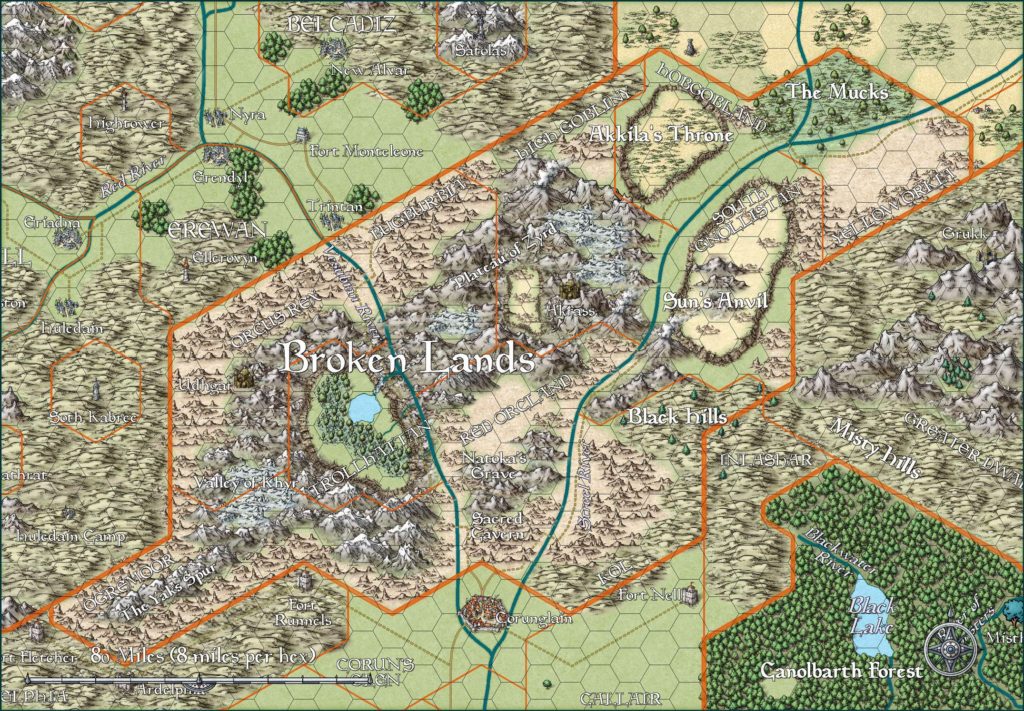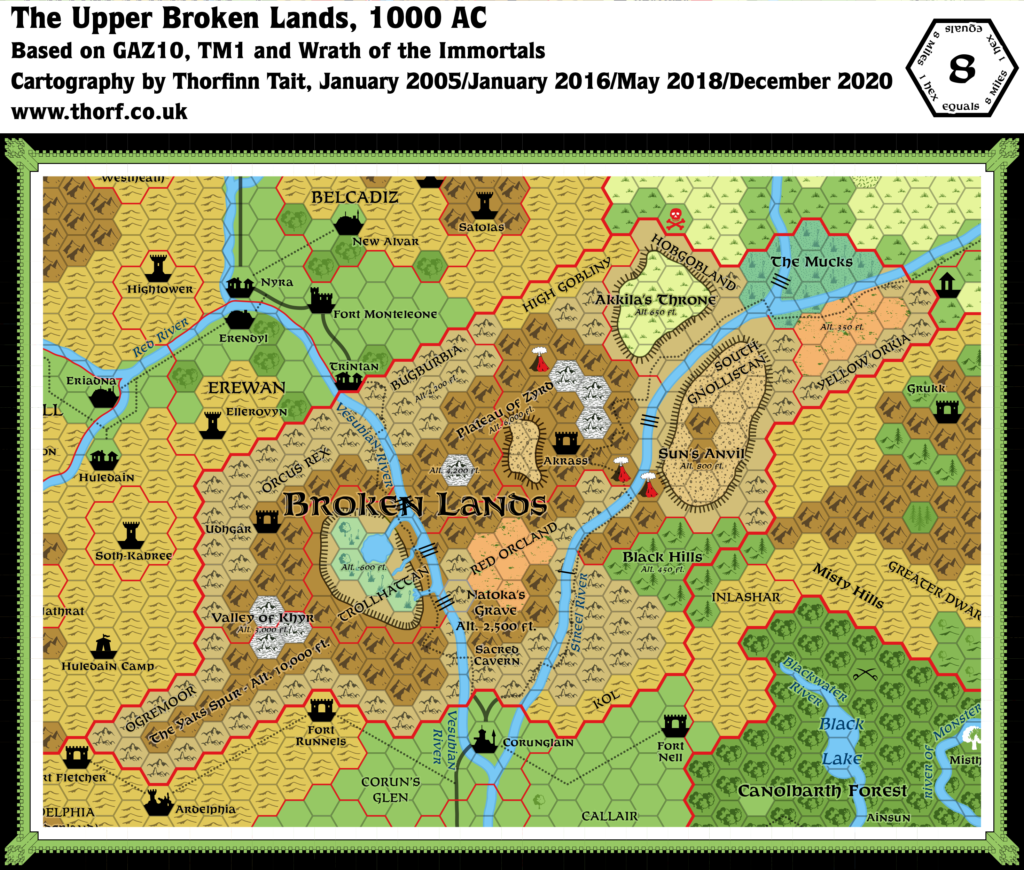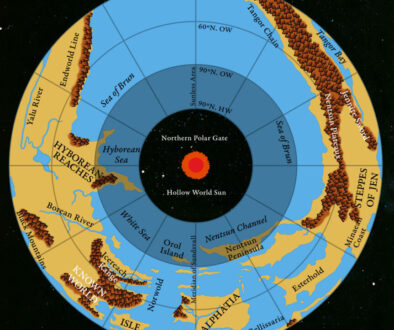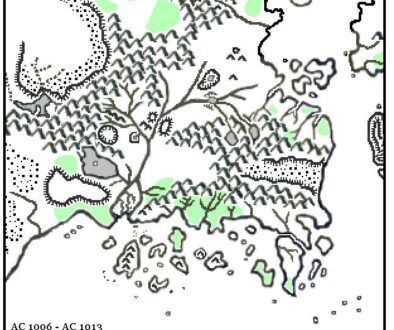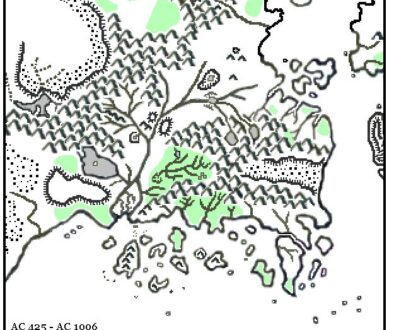Thibault’s Broken Lands, 8 miles per hex
The smallest nation of the Known World — and not even really a single nation, at that. Thibault had tackled it previously as part of larger maps, including his Glantri map from the same period, but this was his first version covering just the immediate region. Of course, it’s basically just a cropped version of that map. As with Thibault’s other Known World maps, he posted the original in August 2000, then a revised version with a black hex grid in September the following year. Both versions are presented below.
There is an error northeast of Corunglain, where the border should follow a missing row of hills around the broken lands. Thibault corrected this in his Darokin v1 map, but the error crept back in with later Ethengar maps. As far as I know, he never released a corrected Broken Lands only map.
Fan-made Map by Thibault Sarlat (September 2001)
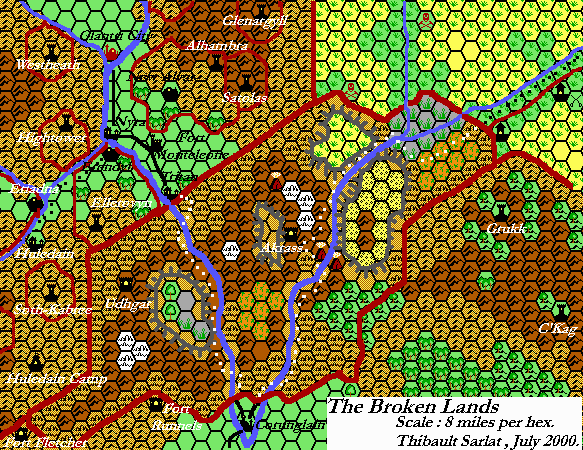
Fan-made Map by Thibault Sarlat (August 2000)
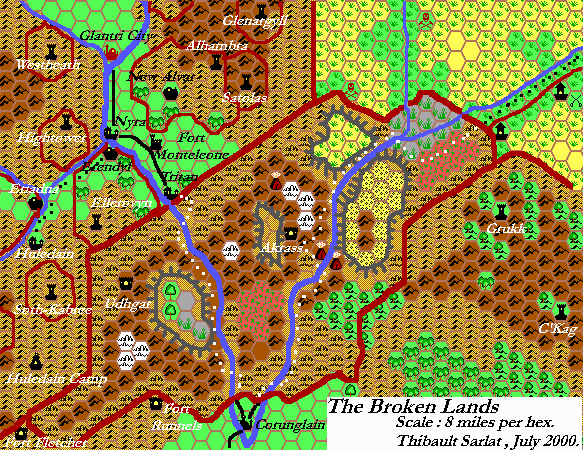
This is an original map created by one of Mystara’s excellent fan cartographers. For more information on the cartographer, including a gallery of all their maps, see also Appendix M: Mappers of Mystara.
Sources
- GAZ3 The Principalities of Glantri (1987) (PDF at DriveThruRPG)
- GAZ10 The Orcs of Thar (1989) (PDF at DriveThruRPG)
- GAZ11 The Republic of Darokin (1989) (PDF at DriveThruRPG)
- GAZ12 The Golden Khan of Ethengar (1989) (PDF at DriveThruRPG)
References
- All of Thibault’s maps at the Atlas of Mystara
- Thibault’s entry in Appendix M: Mappers of Mystara (upcoming)
- Thibault’s author page at the Vaults of Pandius
Chronological Analysis
This is a fan-made map. It was published in 2000 and revised in 2001. The updated Atlas version of this map is not yet available. See also Appendix C for annual chronological snapshots of the area. For the full context of this map in Mystara’s publication history, see the upcoming Let’s Map Mystara 2000 and 2001. (Please note that it may be some time before the project reaches this point.)
The following lists are from the Let’s Map Mystara project. Additions are new features, introduced in this map. Revisions are changes to previously-introduced features. Hex Art & Fonts track design elements. Finally, Textual Additions are potential features found in the related text. In most cases, the Atlas adopts these textual additions into updated and chronological maps.
Coming Soon

